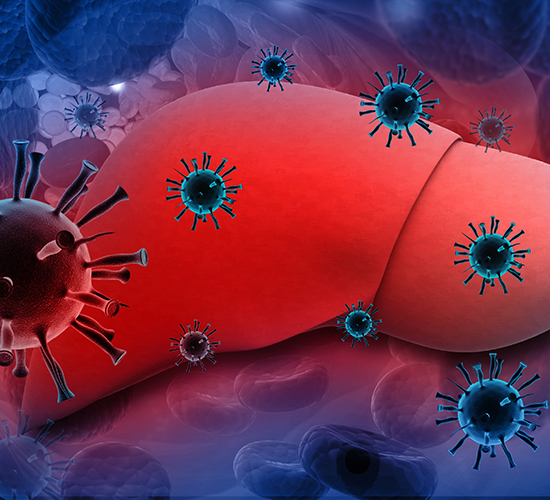All About Hepatitis

Hepatitis is liver inflammation due to a viral infection. Out of the 5 types of hepatitis, Hepatitis A (HAV), Hepatitis B (HBV) and Hepatitis C (HCV) are more common in their occurrence than the others. HAV can be contracted through contaminated food and/or water and direct contact with an infected person. HBV and HCV, need the exchange of infected blood or other bodily fluids. HBV and HCV tend to cause acute infections and become chronic in nature.
Hepatitis is one of the biggest challenges faced by the public health care system. It places a huge burden on the developing and underdeveloped countries around the world and it still largely unaddressed over the years. Around, 325 million people worldwide have hepatitis B or C virus infections making them the most common viral infections in the world. 1.34 million deaths have been reported due to Hepatitis in 2015, which nearly as high as tuberculosis and more than the death toll due to HIV infections(1). With the advancement in medical technology, the loss of lives can be greatly minimized, if not completely circumvented.[1]
To start with, Hepatitis C is a treatable condition, owing to development and availability of direct-acting antivirals (DAAs). DAAs can completely cure most hepatitis C (HCV) carriers within 3–6 months.
One of the biggest barriers to contain the disease is the fact that Hepatitis carriers do not show any symptoms for years together(4). Hence the first step towards reducing the disease burden is the timely diagnosis of the condition.
Diagnosis Of The Deadly Condition
The first step towards treatment is the accurate and timely diagnosis, Hepatitis infections usually present symptoms that resemble the flu. In many cases, however, HCV and Hepatitis B (HBV) carriers don’t present symptoms till the liver damage has reached a point which is beyond repair. HCV or HBV carriers are known to exhibit the following symptoms[2]:
- Fever and tiredness
- Loss of appetite
- Nausea or sometimes vomiting
- Sharp abdominal pain
- Dark urine and grey-colored feces
- Aching joints
- Jaundice
As the symptoms are fairly vague , in vitro diagnostic tests are crucial for a diagnosis. These results not only provide a confirmation to proceed with the most suited therapy protocol, but also allow the physician to get a significant understanding of the progression of the condition. It is important for the doctors to know if and how the patient is responding to the therapy, so they could increase the efficacy by dose alteration or switching medication.
In case of chronic HCV, strains can be identified genotypically from the patient’s blood sample. This allows doctors to tailor the therapy to the patient and disease which leads to higher efficacy and up to 90% of patients being cured and reduced side effects as well as treatment times.
The Road Ahead
The 2030 Agenda for Sustainable Development by the United Nations has resolved to spread awareness regarding viral hepatitis). By 2030, WHO aims to achieve:
- A 60% decline in Liver-related deaths
- New viral hepatitis infection cases to be reduced by 90%
- Diagnosis of 90% of patients with viral hepatitis.
Even with the strides made in countering viral hepatitis, there’s many more miles to go. Research towards new and innovative technologies to prevent, test and treat viral hepatitis still continues.
References:
- Global Hepatitis Report 2017—World Health Organization, April 2017
- https://www.ncbi.nlm.nih.gov/books/NBK92038/